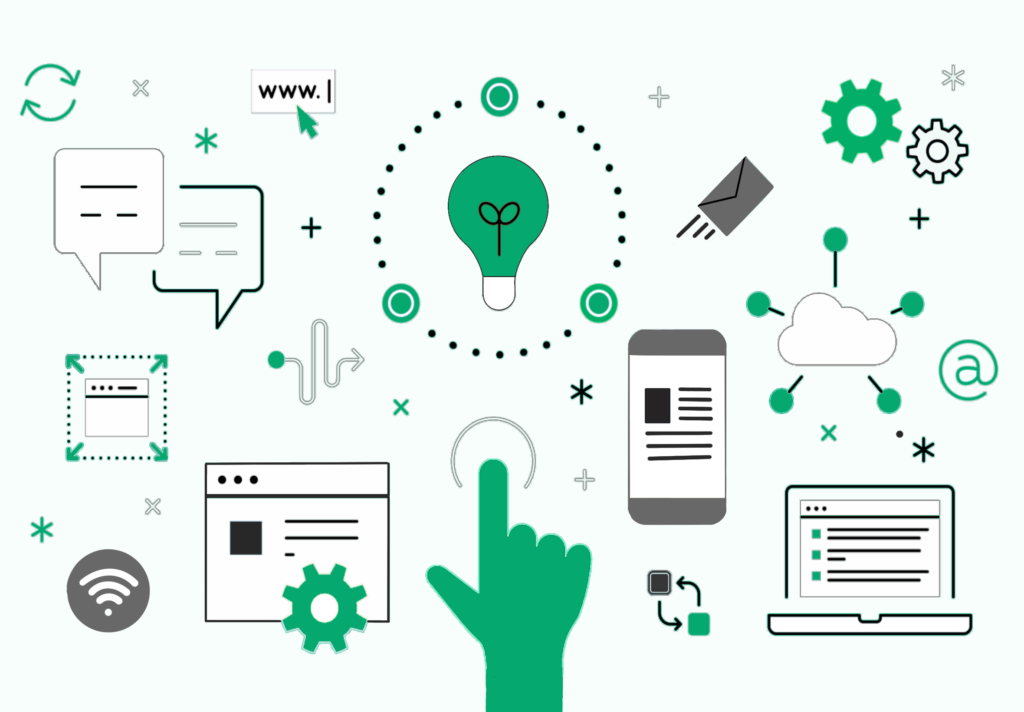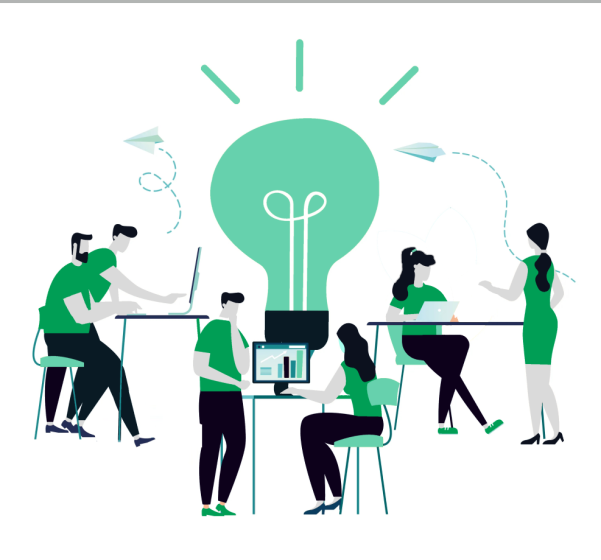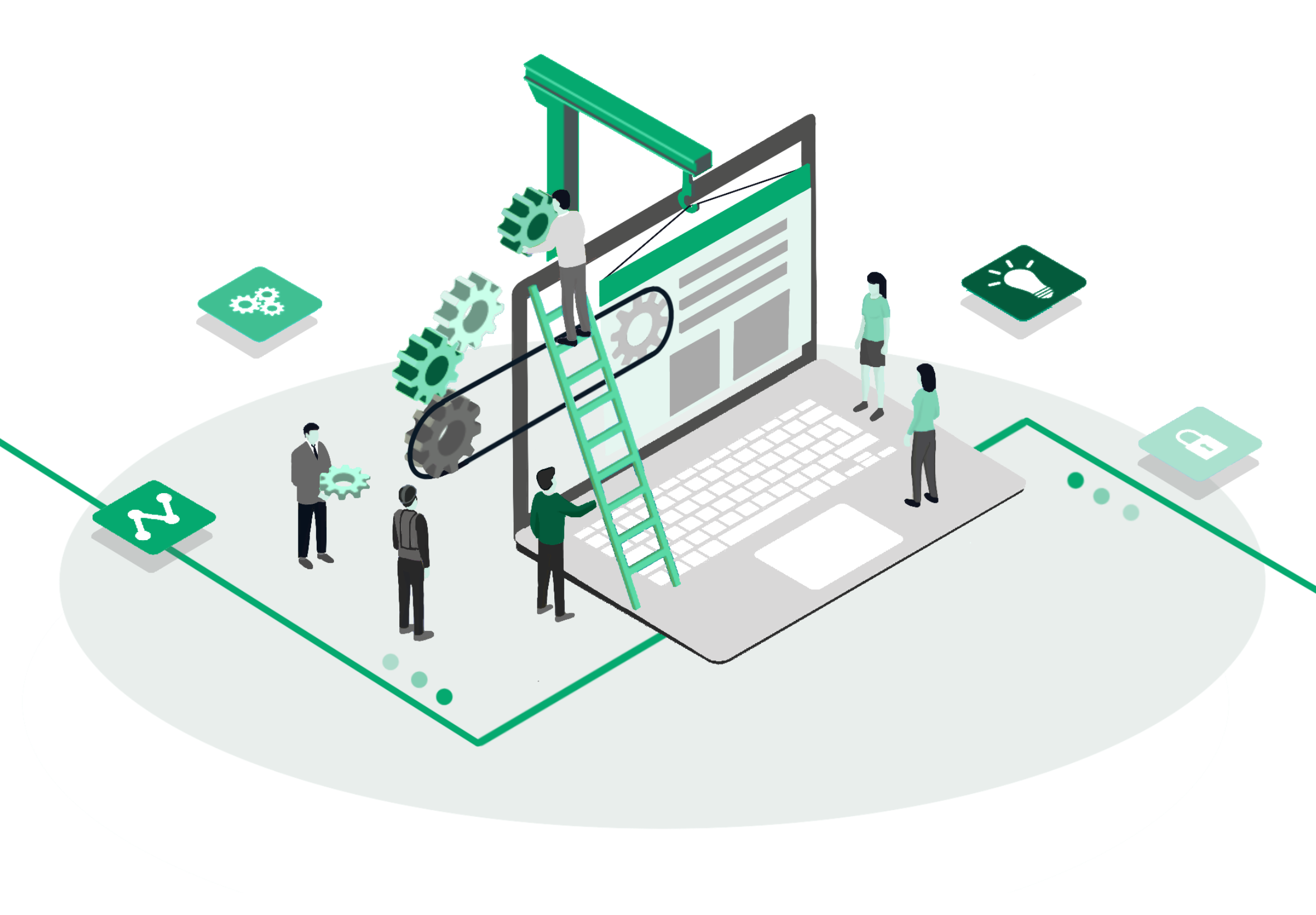
Tackling a big refresh on a product that’s been around for ages is a huge undertaking. In addition to the redesign work, there’s usually a drawn-out diplomacy effort in getting buy-in, organizing the project, and socializing the change. And while most redesigns have popular support or they wouldn’t get the go-ahead, it doesn’t mean that a project won’t have detractors, skeptics, or folks displeased by the disruptions it generates. Navigating all this requires significant attention and communication, the upshot being that the work — as is often the case with these large-scale efforts — goes far beyond the work itself.
At Grand Studio, we’ve had the privilege of working with many clients as they tackle big redesigns. Because we know how much legwork it takes, we’re always looking for ways to help our clients economize their efforts and generate bonus benefits from the work they’re already doing. If you’re on the brink of a big redesign, read on for a few tips on getting more bang for your buck.
Strategy 1: Leverage the redesign to boost or repair reputation
Many teams, often through no fault of their own, are tasked with managing old tools and products that — to put it delicately — are a little suboptimal on the usability front. This can generate significant reputational damage for the team at the helm. Of course, no one enjoys being on the receiving end of negativity, but this bad reputation also represents a degradation of trust that makes it tangibly harder to get things done within the organization. A product refresh can be a great opportunity to mitigate this reputational harm and put a better foot forward.
For instance, we recently worked with a large medical technology client to refresh an internal purchasing tool that had been causing strain on thousands of employees for years. As part of the redesign, we reached out directly to those most adversely impacted by the tool’s shortcomings. In addition to providing a wealth of information about improvement opportunities, we used these conversations to validate frustrations, provide context on the barriers that had prevented earlier improvements, and demonstrate expertise and commitment to work towards something better. This kind of work helps us to understand how to improve the product while demonstrating a commitment to making our users’ lives better.
Strategy 2: Be proactive about change management
Even if the redesign ultimately makes everyone’s life easier, change can nonetheless be tricky. This is especially true if your process involves temporary product outages, significant process changes, or a steep learning curve. As such, it can be extremely helpful to communicate proactively and robustly with teams who will be impacted by the redesign, bringing them along with you in the redesign versus simply sending out an FYI when the switch-over happens.
As in the prior strategy, taking the time to understand a redesign’s implications on various teams and workflows positions you to strengthen the product and build trust and goodwill. Some clients we’ve worked with tell us that the positive communication streams established during a redesign have provided lasting benefits to their organization, impacting projects far beyond the initial collaboration. As designers/researchers, we’re also on the lookout for data communication streams that should stay open past the initial engagement. For example, any metrics we look into for the purpose of the research will likely be incredibly useful mechanisms to measure how a project is doing on an ongoing basis.
Strategy 3: Evaluate the cost/benefits of bringing features in house
Especially when your organization is just starting off in a new domain, it can really kick-start things to partner with third parties on technology. Instead of taking months to build something in-house, you buy something ready-made and take it for a spin. However, if this third-party tool winds up becoming a big part of your business, there may come a time when it makes more sense to bring it in-house. While the up-front cost of doing so will usually be large, it can de-risk your business from relying too much on third parties, allow you the flexibility to custom-build the product to your exact specifications, and often save you money in the long run.
If your organization has green-lit a design overhaul, it usually means there’s popular support for the product’s utility as a core part of your business. Accordingly, it can be a good time to assess the business case for bringing any related third-party tools in-house.
Strategy 4: Incorporate forward-thinking process changes
Sometimes, the best time to throw in change is right on top of more change. While it may seem like a terrible idea to incorporate large-scale process changes into a massive redesign, we’ve found that, in most circumstances, the opposite is true.
During a redesign, people’s mindsets are often more expansive, and their ideas are more malleable. As such, it can actually be a prime opportunity to shake up stagnant processes and try out a new way of doing things. Chalk it up to redesign the procedure and test out the new processes you’ve been meaning to socialize, whether it’s a prototyping workshop, a new stream of meetings, or a feedback touchpoint you’ve always thought should exist.
This is particularly likely to be successful if part of your work involves consultants or outside teams — people expect an even higher degree of change when there are newcomers around, especially those acting in a consultative capacity. Loop your consultants into any process changes you feel need to happen so they can support you in advocating for them.
Strategy 5: Take a broad view of KPIs
While you’ll keep your eye on the primary KPIs driving the redesign, there are often secondary or tertiary ways the redesign will have an advantageous effect on the organization. Getting a handle on what these are can add positive internal PR to your project, yielding increased buy-in for this effort and anything else that comes out of your team in the future.
For example, we once helped a client redesign a tool that was massively confusing users, leading to errors that needed to be found and corrected downstream. Rectifying this user confusion was the primary goal of the project. However, as we got to know the space better, we saw many confused users call an internal support line for help, which cost the client resources.
We talked to the support center to better understand the questions and complaints they received related to the tool, and the redesign subsequently decreased their call volume. Decreasing support call volume wasn’t a main KPI, but it was an extremely welcome bonus outcome that made the project team look better. The more of these side stories you can gather while working on the project, the more your positive PR will disperse, generating buy-in and trust for this project and your next.
For all the work involved in a redesign, it’s worth the effort to get the maximum benefit possible. For many of those benefits, attending to the softer/more relational side of the work gets added benefits for years.
As a design and strategy consultancy, Grand Studio specializes in projects that involve not just doing the work but collaborating with you on high-level strategic thinking that can spur positive change within your organization. We know how to use our position as outsiders to support you in diffusing tension, breaking through ossified processes, forming positive new relationships, and workshopping fresh perspectives on chronic problems.
Have a project you’d like to work together on? We’d love to hear from you.


